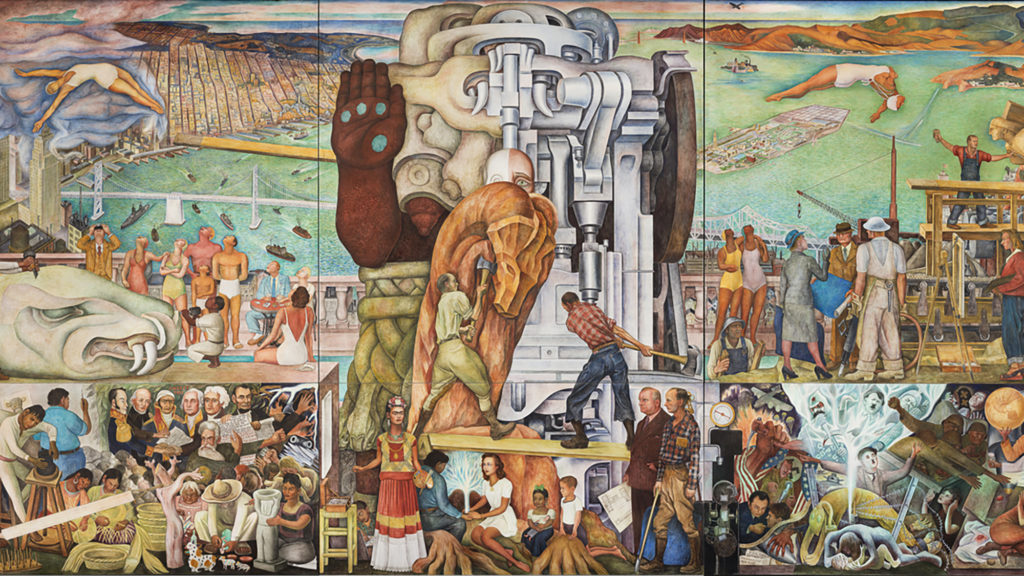
by Daniel Acosta Elkan, Ph.D
Instructor, Latin American and Latino/a Studies
City College of San Francisco
The works of Diego Rivera remain powerful expressions of Mexican culture, life, and politics. In Pan American Unity (1940), the artist ties together the traditions of neighboring nations through a critical lens. As with his entire body of artistic works, Rivera sought to unleash the radical potential of art through making political ideas accessible to the masses, conveying the deep culture of Mexico to a multiethnic audience. Pan American Unity is the artist’s largest portable fresco and arguably Rivera’s most ambitious: students learn how the sixty thousand pound mural weaves Mexican and U.S. histories, and brings them together in the broader global context of the struggle against Fascism.
Intended for use in high school and higher education History or Ethnic Studies classrooms, this lesson places the mural in its historical and ideological context. Both a slide deck for use in the classroom, as well as a brief background document for educators, are included. In the backgrounder, Pan-Americanism is discussed from its roots in the thought of Bolívar and James Monroe through to the “Good Neighbor Program” of Franklin D. Roosevelt. Particular emphasis is placed on the anti-colonial orientation of Latin American iterations of the “ideal.” Turning to Rivera himself, discussion of his political philosophy gives way to his objectives in the mural itself, as well as his subsequent emphasis on Pan-Americanism and the role art can play in its cultivation.
